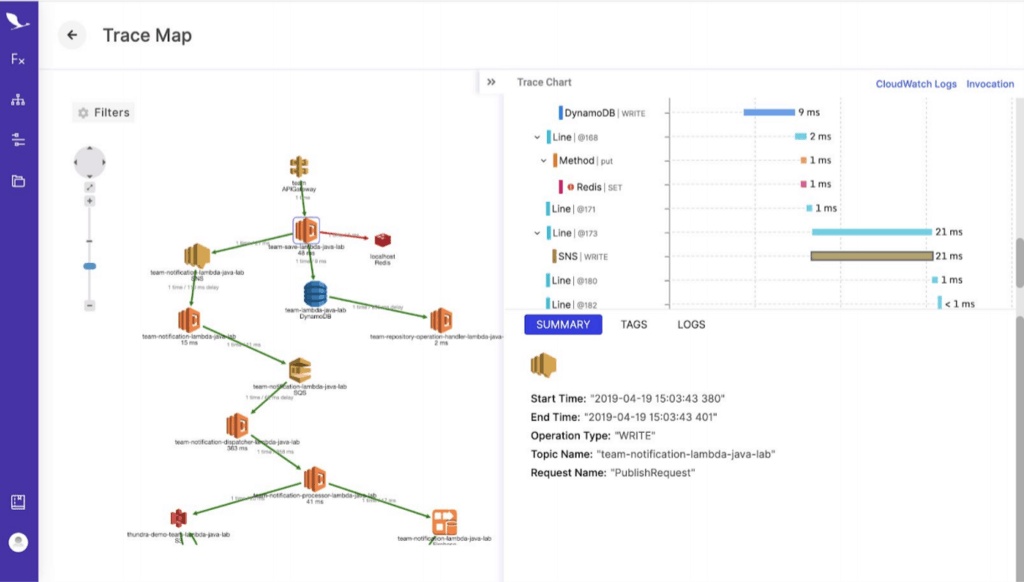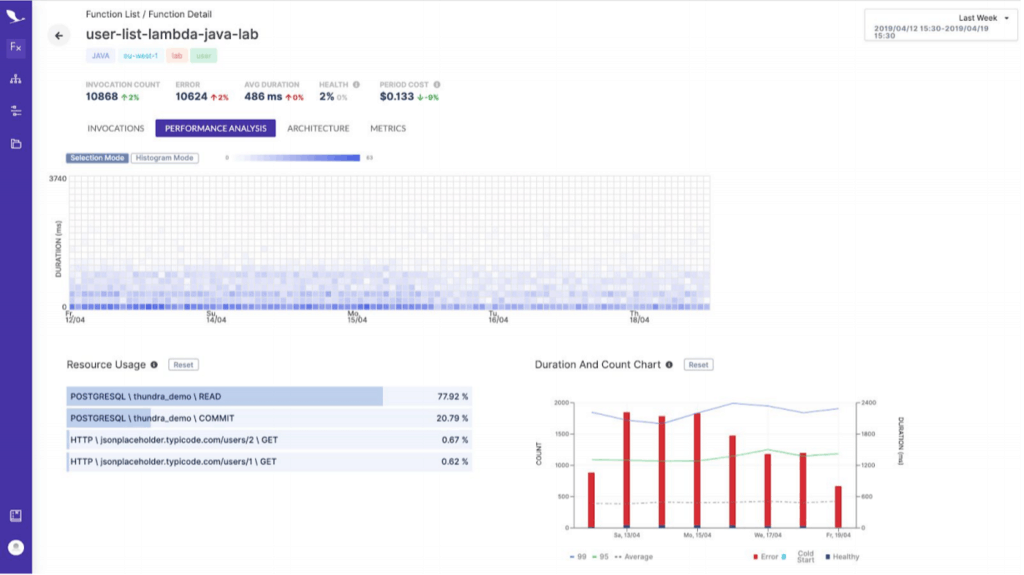
Yan Cui
I help clients go faster for less using serverless technologies.
Hi, welcome to another weekly update.
We welcome Thundra back as our sponsor for May!
It is my pleasure to welcome Thundra back as the sponsor for this month. Here’s a message from Thundra, who is also giving away copies of my video course Production-Ready Serverless!
Serverless architectures are usually implemented on event-driven distributed functions. Monitoring such applications can be a daunting task with the old school methods. Thundra helps companies and developers effectively monitor and troubleshoot their serverless architectures with zero overhead. To unlock Thundra, all you need to do is adding the AWS Lambda Layer to your functions. Thundra’s full tracing capability combines distributed and local tracing enabling developers both to track the messages exchanged in serverless transactions and to trace the values of local variables inside the functions. Thundra names this capability as “visibility from the bird’s eye view to the tiniest detail”. This flexible tracing reduces the troubleshooting of serverless application by nearly 90%.
Thundra also enables you to make outlier analysis with its capability to pinpoint the problematic parts with one click when your function was not performing well. Thanks to that, you can fix the problems before they turn out to outages. With rich metrics, you can monitor the health and cost of your serverless architecture. Sign up to Thundra today to unlock the best serverless observability experience. We’re giving away “Production-ready Serverless” video course by Yan Cui to the people who share their serverless observability challenges.
New posts
To VPC or not to VPC? Pros and Cons in AWS Lambda. In this guest post for Lumigo, I dug into issues such as slow cold start, ENI & IP limits, and does VPCs actually improve your security (for Lambda) in meaningful ways?
Using CloudWatch and Lambda to implement ad-hoc scheduling. In this post, I looked at how you can implement ad-hoc scheduling using a cron-based approach with CloudWatch and Lambda. I considered the scalability and precision of this approach and how you can mitigate issues such as hot spots.
Introducing… CloudFormation extrinsic functions. I created a plugin for the Serverless framework that lets you use a number of custom Fn:: functions in your serverless.yml – e.g. Fn::StartsWith and Fn::Substr.
New course
My new course – Complete guide to AWS Step Functions – is now live!
You can browse the curriculum and purchase the course here. The first two chapters are free to everyone. The course is approximately 2 hours in length and covers everything you need to know to use Step Functions effectively.
- what is Step Functions, and when to use it?
- the 7 types of states
- API Gateway and CloudWatch Event triggers
- activities
- integration with other AWS services – SNS, SQS and DynamoDB
- best practices
- design patterns
Open source contributions
serverless-step-functions
We released a big change to the serverless-step-functions plugin this week: to support CloudFormation intrinsic functions in the state machine definitions.
Previously, you had to construct the ARN for your Lambda functions, or SNS topics, or SQS queue URLs:
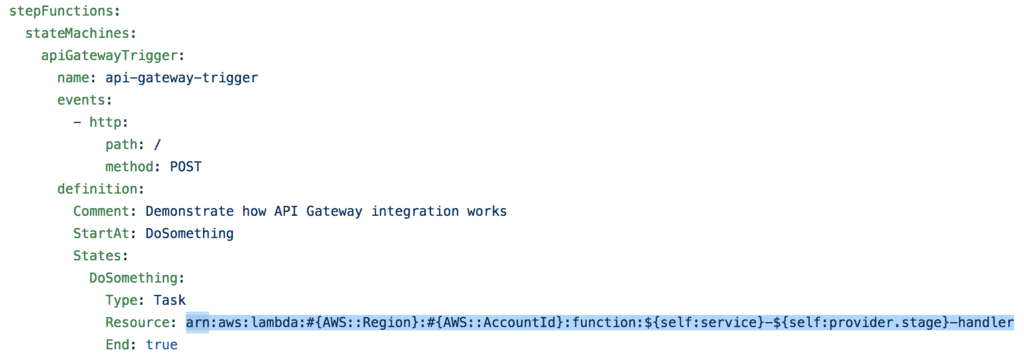
From v1.18.0 onwards, you will be able to use Fn::GetAtt to reference a function in your serverless.yml like this:
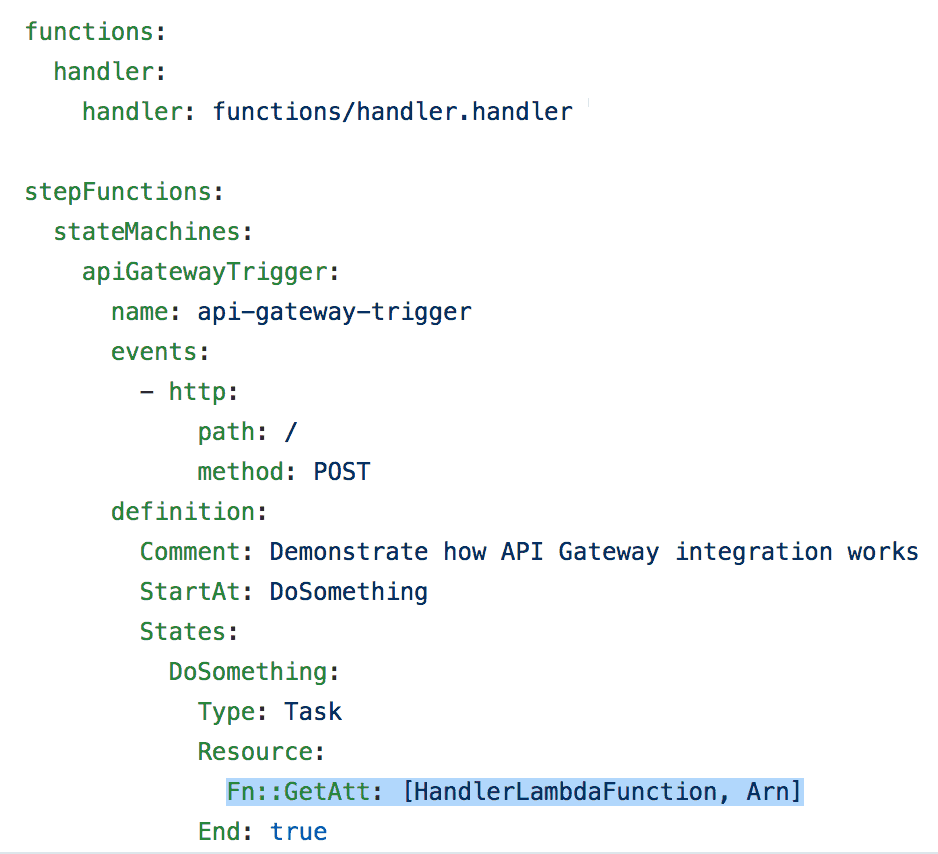
One thing to keep in mind is that you have to use the CloudFormation logical ID for the functions (or SNS topics, or SQS queues). Since the serverless framework is generating these logical IDs, the quickest way to find them is to run “sls package” and then look into the generated CloudFormation template in the .serverless folder.
AWS announcements
AWS announced some big changes to Parameter Store:
- Higher API throughput – once enabled on an account, you can get up to 1K req/s (the current max is around 40 req/s). When you enable this feature, you will also start to incur $0.05 per 10K API calls to SSM Parameter Store.
- Advanced Parameters – allows you to use bigger payload (8KB), configure expiration policies and send notifications when parameters are about to expire or haven’t changed for a certain amount of time. Advanced parameters are $0.05 per parameter per month.
Chris Munns also shared some great news regards to Lambda performance!
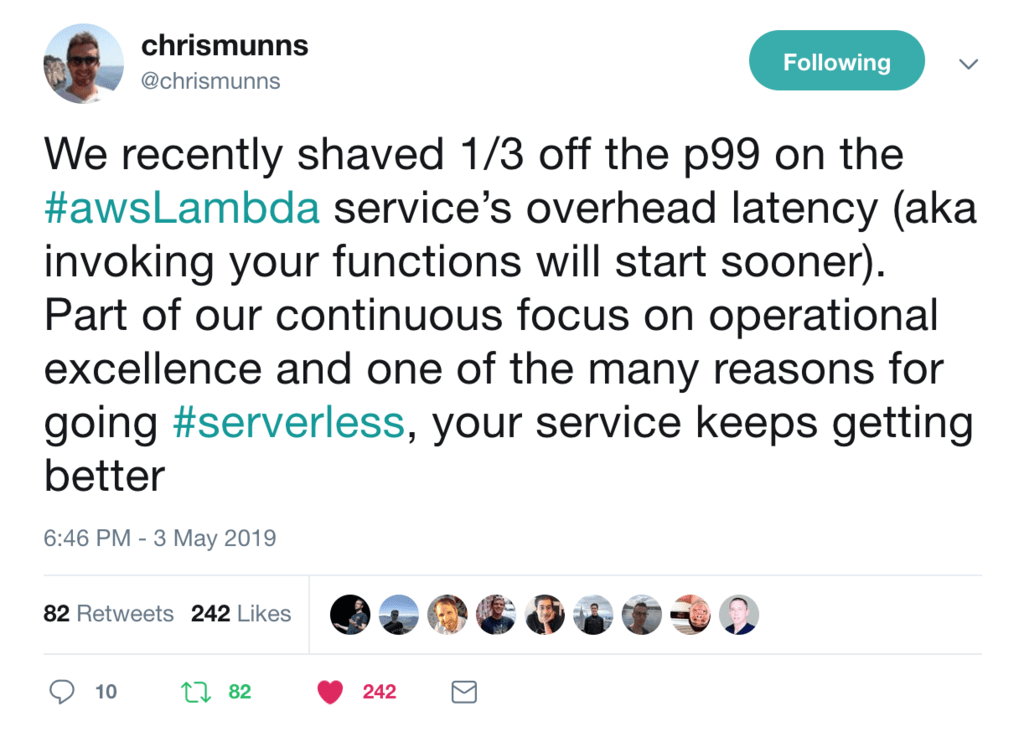
And that’s it for another weekly update, see you guys next week :-)
Whenever you’re ready, here are 3 ways I can help you:
- Production-Ready Serverless: Join 20+ AWS Heroes & Community Builders and 1000+ other students in levelling up your serverless game. This is your one-stop shop for quickly levelling up your serverless skills.
- I help clients launch product ideas, improve their development processes and upskill their teams. If you’d like to work together, then let’s get in touch.
- Join my community on Discord, ask questions, and join the discussion on all things AWS and Serverless.

